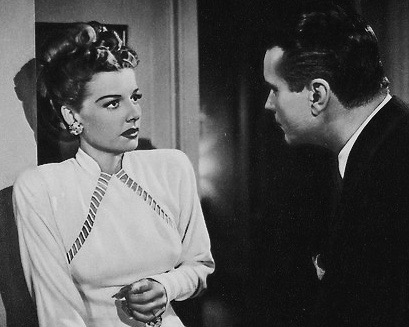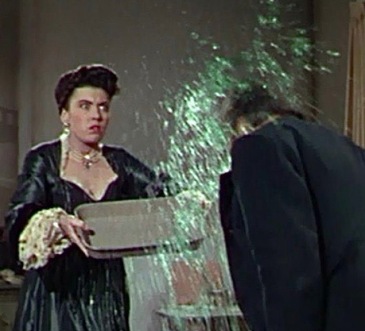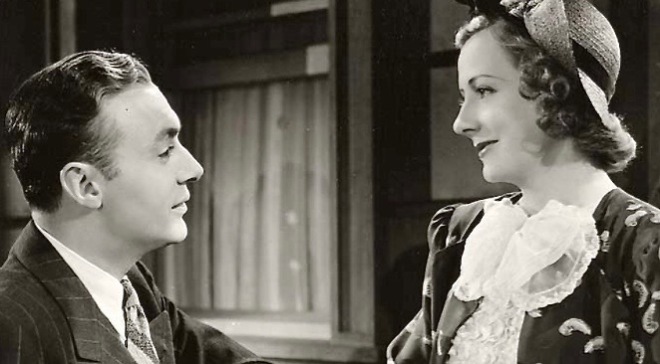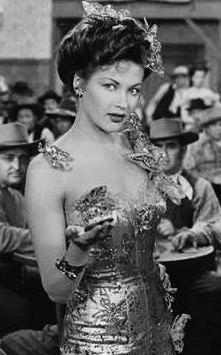
J for Jordan. There it is, right after I for Ivers, which of course comes after D for Dietrichson. Thelma Jordan’s file is thick like Martha Ivers’ and Phyllis Dietrichson’s. They sure had their share of trouble. Maybe that’s what makes them so much fun to watch, thanks to Barbara Stanwyck, who expertly plays three distinct yet related faces of evil.
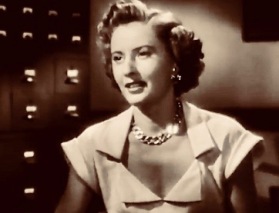
Robert Siodmak’s production shares thematic similarities with earlier pictures by Lewis Milestone and Billy Wilder, but this story contains a shadowy subtext. Stanwyck is in full femme fatale mode, playing a woman trying to break free of the past. This time she is involved in the death of another “loved one.” It’s her Aunt Vera (Gertrude Hoffmann). Vera has taken her in, and Thelma functions as the elderly woman’s companion. Vera is frail but is nowhere near dying, so Thelma decides to hurry things along one night during a storm.
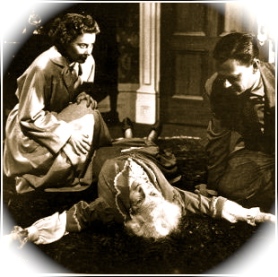
Thelma blames her aunt’s murder on a prowler, but the police figure she’s behind it. In order to get away with the crime, Thelma needs the help of a lawyer (Wendell Corey). Cleve Marshall works in the district attorney’s office. He’s very skilled at his job, and he’s very married.
He previously met Thelma when she turned up to see his boss. They ended up having a drink and spending time together. He fell in love with Thelma, which she realized she could to use to her advantage to create a new life.

After Thelma is arrested on suspicion of murder, she works her feminine wiles on Cleve so he will throw the case in her favor. There are trial scenes which Siodmak and cameraman George Barnes stage precisely. While the ins and outs of the legal system are observed, most of the action is focused on Thelma’s ability to manipulate the judicial process. Part of her case involves the existence of a “Mr. X” who was with her the night of Vera’s death. Cleve’s boss (Paul Kelly) is unable to figure out Mr. X’s identity until the very end.
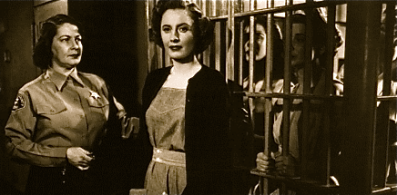
Perhaps the best sequence is the part where the verdict comes in and Thelma is marched over from the women’s jail across the street. She passes reporters on the sidewalk and heads up the steps into the courtroom. Siodmak’s direction is straight forward, and the sequence has a semi-documentary feel to it. It works very well, especially when Thelma is exonerated by the jury.
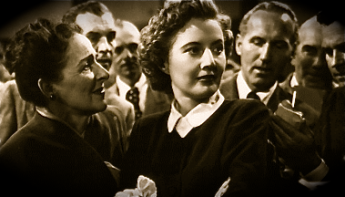
One can imagine how many other crimes Thelma committed that aren’t included in her file. Siodmak and writer Ketti Frings could have added flashbacks, where we saw Thelma pulling earlier scams. We could’ve learned what brought her to live with her aunt in the first place. Then how Thelma persuaded Vera to change the will and make her the beneficiary. Did Aunt Vera see something good in her?
Of course there wasn’t anything good in Phyllis Dietrichson; she was rotten to the core. And there was very little evidence of goodness in Martha Ivers. But Thelma Jordon’s personality is different. For awhile things are going her way. Until she decides to do the right thing and let Cleve go. After a car accident, she’s taken to the hospital where she confesses some of what she’s done. But she does not want to reveal that Cleve was Mr. X, because he was Mr. Right. And for a time, he made her forget everything that was so schizophrenic about her life.

